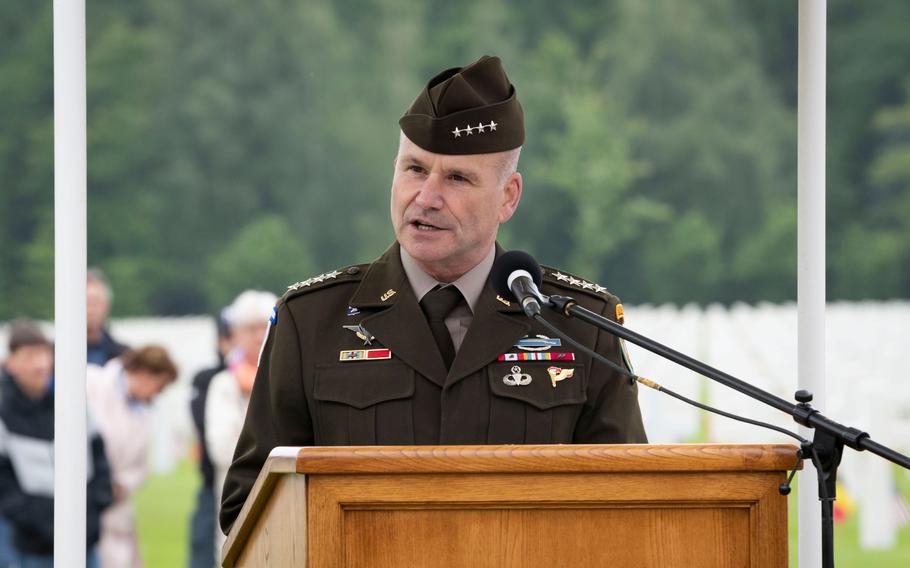
Gen. Christopher Cavoli, NATO supreme allied commander Europe, speaks at a Memorial Day ceremony at Ardennes American Cemetery in Neupré, Belgium, on May 25, 2024. (Phillip Walter Wellman/Stars and Stripes)
The top U.S. general in Europe said Wednesday that his command is assembling new teams to carry out combat readiness inspections of allied units, a move aimed at ensuring NATO can move with speed should its territory come under attack.
Army Gen. Christopher Cavoli, NATO’s supreme allied commander and leader of U.S. European Command, said hundreds of thousands of troops are now operating on higher alert.
But the war in Ukraine has shown NATO forces will need to be prepared in ways it wasn’t before Russia’s invasion of Ukraine in 2022.
“Instead of just looking at the sharp side of the sword, we’re looking at the whole sword now,” Cavoli said, speaking on the sidelines of NATO’s summit in Washington.
To that end, Cavoli’s command is drawing lessons from the war in Ukraine, where the scale of fighting and expenditure of munitions is occurring at an unprecedented scale.
“As we look in Ukraine, we’ve put an increased emphasis on stockpiles and munitions and supplies on hand,” the general said.
The situation also has had implications for NATO logistics and what would be necessary to deploy and resupply troops in a crisis, he said.
In Washington, galvanizing support for Ukraine is at the top of the summit agenda. But allied military officials also are working on plans to carry out an upgraded defense strategy in Europe developed in response to concerns of potential Russian aggression.
The focus on territorial defense has forced a major shift at Cavoli’s military headquarters in Mons, Belgium, which is tasked with putting defense plans into action.
At NATO’s previous summit in Vilnius, Lithuania, last July, heads of state approved those defense plans. The aim was to provide the kind of operational detail that was typical during the Cold War, when American troops positioned in Germany knew what territory they would be defending if war broke out. Granular information of that sort became unnecessary in the aftermath of the Cold War as concerns about Russian belligerence faded.
In subsequent years, NATO shifted its focus to smaller-scale operations or missions outside of Europe, such as the war in Afghanistan. But the Cold War style of war planning is back.
The classic operational plans “describe how we’re going to defend specific areas of the alliance and what we’re going to use to do it,” Cavoli said. “This is a big shift. The alliance had gone for many years without plans since the end of the Cold War.”